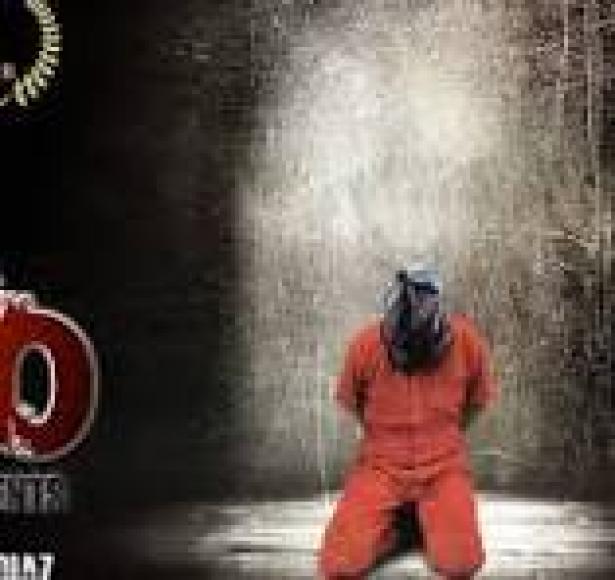Four months to the day after 9/11, on Jan. 11, 2002, the United States Naval Station in Cuba opened the Guantanamo Bay Detention Center, known around the world as “Gitmo.” Nearly 800 men and boys, all of them Muslim, were brought there in handcuffs and shackles.
By designating these “unlawful combatants” as “detainees,” the Bush Administration obscured the fact that Gitmo is not a detention center; it’s a prison. Its inmates were never entitled to protection under the Geneva Conventions. They were interrogated, tortured and otherwise dehumanized within an inch of their lives, some for as long as 20 years. Many of the reported “suicides” that took place inside are believed to have been the result of a a technique known as dryboarding, which involves stuffing rags down the throats of subjects to induce asphyxiation.
In “I am Gitmo,” French filmmaker Philippe Diaz reenacts the reality of the prison in the style of a documentary procedural. Its focus is the degrading and shameful treatment of Gamal Sadek, an Egyptian mujahideen who fought the Soviets in Afghanistan during the 1980s. When the Soviets retreated, he stayed in Kandahar, married and became a schoolteacher. After 9/11, he was arrested, suspected of being a member of the Taliban, and a confederate of Osama bin Laden. One article of evidence used against him is a grainy photograph of bin Laden surrounded by his men. Using facial recognition techniques, American intelligence identified Sadek as one of them. In exchange for bounty money from the U.S., Sadek’s imam also told U.S. investigators that the Egyptian was involved with the Taliban. When Sadek pleads innocence, he is tortured. When he maintains silence, he is tortured even more rigorously. He is routinely denied food and water. When those techniques fail to yield a confession, Sadek is subjected to what the Bush administration called “enhanced interrogation techniques” — another way of saying he was tortured.
Its focus is the degrading and shameful treatment of Gamal Sadek, an Egyptian mujahideen who fought the Soviets in Afghanistan during the 1980s.
Given the powerful emotional charge of the material, it is a shame that Diaz’s storytelling is so inconsistent. It begins as the alternating parallel accounts of a U.S. military interrogator John Anderson (Eric Pierpont), and Sadek (Sammy Sheik), each explaining the origins of their standoff at the detention center. Due to Sheik’s commanding and charismatic performance, Sadek swiftly emerges as the movie’s central figure, a stalwart of faith, victim of mistaken identity and of overzealous corporal punishment.
As the interrogator, Anderson is an old-school military man uncomfortable with the idea that torture will result in confession. While Anderson finds that “enhanced interrogation” protocols to be questionable, he does not question the intelligence against Sadek. While aware of the various ways of how the American military is trying to make Gitmo detainees confess, never do Anderson or his colleagues conclude that doing the same thing over and over again while expecting different results is one definition of insanity.
Dry-boarding. Water-boarding. Sexual abuse. Shoving prisoners’ heads in toilets and repeatedly flushing. Hanging them from meat hooks. Psychological abuse, such as placing prisoners in coffins and nailing them shut. Forced feeding. Sensory deprivation. I barely survived the film’s simulations of this abuse. How did the victims survive the real thing?
The film takes its title from the prisoners who, bruised and abused, go on hunger strike and like the followers of the freedom fighter in ”Spartacus,” say to the authorities, “I am Gitmo.” The film left me shaken and in agreement with the American guard who tells Sadek, “Many of us feel ashamed about what’s going on here.” Even if “I am Gitmo” is too narratively choppy to be a great movie, it is an effective and necessary reminder that after 23-plus years, Guantanamo is still open. And for that, we should all feel ashamed.
RELATED STORIES


Spread the word